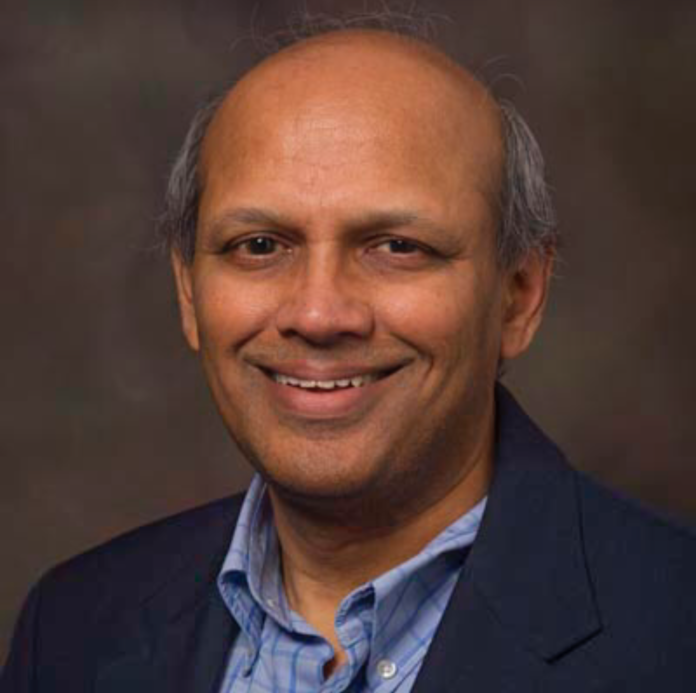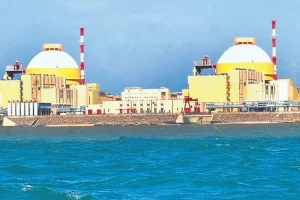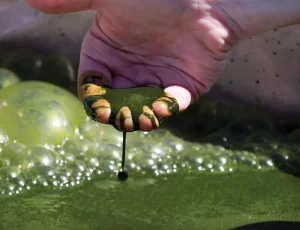Ram Ramprasad’s dream of how India can take a leap in how it reimagines its climate and energy future
Kusha, was born to a farmer couple in a remote village in the State of Telangana, India. Her little baby face was charming with an inquisitive look, so her parents named her Kusha, meaning “talented” in Sanskrit. Kusha was raised in a simple manner. She learned much wisdom from her parents by working on the farm. She excelled in school and earned a scholarship to obtain dual degrees in bioengineering and biophysics from the Indian Institute of Science, Bengaluru. After her graduation, she was recruited by ABC Consulting based in Hyderabad. ABC was considered the best sustainability consulting company in India. Both private and public companies sought its services.
ABC assigned Kusha to the energy department. Her first project was to transform the energy sector in Telangana. She noticed that Telangana mimicked the energy pattern of entire India – about 60 percent dependence on coal, 3 percent on nuclear power, and the remaining spread equally between hydro, solar, and wind. She was appalled that the share of nuclear power in Telangana and India was only three percent since 1998. She developed a strategy to increase the share of nuclear power from 3 to 25 percent, wind, solar and hydro power from 47 percent to 50 percent, and reduced the share of coal from 60 to 25 percent by 2030. In addition, her plan had the potential of making Telangana a net-zero emission State by 2040. Although her strategy was aggressive, she outlined her plan as stated below.
Nuclear Power is Safer
Develop a collaborative joint venture with X-Energy, (a fourth generation private nuclear reactor and fuel design engineering company in USA, one of the only two companies along with Terra Power to win the 2021 grant for advanced nuclear technology by the Department of Energy (USA) to establish a few small nuclear power plants all over Telangana. Each of its 80 MW reactor is easily transportable by rail or road; could be made with commercially available materials. Each plant in a pack of four reactors would serve the electricity needs of 4 million people (equivalent to serving 250,000 American sized homes).
Each plant would use about 20 acres of land. All scientific data showed X-Energy’s advanced technology was very safe. Even in a worst-case scenario, the radioactive release would be contained within the plant. The technology has demonstrated several advantages over conventional nuclear reactors. Plus, nuclear power has zero carbon emissions unlike coal, uses less land compared to solar, and uses 17 times less material than solar. Unlike wind turbines, nuclear plants do not kill birds, bats, and owls. Kusha believed that in the name of addressing climate change one should not destroy the environment and biodiversity. France gets about three quarters of its power from nuclear, despite an older technology its safety record is quite impressive.
Carbon Gas-eating Algae
Emulate the algae technology (HTB-1 non genetically modified strain) developed by University of Maryland and commercialized by HY-TEK Bio, a startup also based in Maryland, USA. After more than a thousand experiments, the University isolated a specific algal strain that consumed 100 percent of greenhouse gas (GHG) emissions produced during industrial manufacturing and power generation processes. HY-TEK Bio tags its thin and inexpensive Mylar bioreactors to the tail end of the process where flue gases are produced without interfering with any of the manufacturing equipment.
The algal byproducts are rich in lutein/zeaxanthin, lipid oils and several other substances. The byproducts can be used as a replacement for palm oil, and service many other industries such as pharmaceuticals, nutraceuticals, biofuels, cosmetics, etc. Kusha felt in her heart that if the entire coal industry in India used this type of technology, India could more rapidly reach its goal of net zero carbon emission. This was a practical circular economy approach. Plus, the return on investment of converting pollution to a valuable byproduct was a no-brainer.
Bladeless Windmill
For households in almost all cities including villages Kusha recommended the use of several types of materials that would deflect the hot rays of the sun such as the ultra-white paint developed by Purdue University, USA. Purdue claimed that its product when painted on a house would not need any air conditioner. She recommended households to install a blade-less windmill such as the one developed by Aero-MINE Technologies in collaboration with Sandia National Laboratories, USA Kusha liked the technology because this windmill had a modular design, making it easy for the average man to install the same on his roof, it occupied only ten percent of the rooftop space, provided 50 percent more power than rooftop solar, and saved money due to an easy installation process including less use of rare earth metals.
Further, it complemented the energy needs if the house owner already had solar panels on his roof. Kusha believed India eventually needed to switch to flexible organic photovoltaics that depended less on precious resources. Use of blade-less windmills was also encouraged for use by corporations. She wanted the government to slowly dismantle the old style wind turbines that were contributing to the loss of biodiversity, especially the birds, owls, and bats. Alternatively, she suggested micro windmill technologies to replace the big blades or painting the blades with different glow-type colors that flying animals could detect.
For apartment complexes, Kusha also recommended emulating the Home Biogas technology from Israel that converted organic waste into cooking gas. Her plan came with money back guarantees if households did not see a 40-50 reduction in their monthly energy bills. Kusha wanted the Telangana government to market the strategy via household visits.
The government of Telangana and the public was deeply impressed with her integrated plan of lowering energy use and driving Telangana towards a net zero economy. When the government of India approached her for her views on foreign direct investment, she advised them to create an ecosystem for research and innovation in biology/microbiology, incentivizing academia to work closely with industry, importing the right intellectual property from academic institutions or startups all across the world. She felt this approach was cost effective and more impactful until a full-fledged ecosystem developed within India.
Microbes Replace Chemical Dyes
ABC bagged another contract from one of the biggest textile and leather manufacturers in India. The government was very upset that their chemical dyeing and tanning process was polluting the river and ground water. ABC assigned this project to Kusha. She studied several companies. She was impressed how Huue, Colorifix, Vienna Textile Labs, etc., were using microbes to create natural dyes. She identified a local entrepreneur, Mitra, working in this area, he had sent his samples and protocols to Culture Biosciences, USA, since he did not have the capital to do the bio manufacturing on his own.
Culture Biosciences provided bio manufacturing as a service. Mitra, had also worked with Ginkgo Bioworks, Boston, USA, who offered a platform where they programmed cells to make everything from food to materials to therapeutics. However, Mitra, along with a local top notch microbiologist, succeeded in isolating a natural microbe that accomplished the job. Kusha was impressed that Mitra was able to produce natural dyes with non-genetically modified microbes despite the lack of an ecosystem in India. The textile and leather manufacturer soon contracted with Mitra to buy his natural dyes. It also dismantled its entire leather business and emulated the business model of making leather in the lab similar to what Modern Meadow was doing in the USA through the use of microbes.
After having worked at ABC Consulting for about ten years, Kusha resigned to start, The Microbiology Training Center. The mission and goal of the center was to train microbiologists at all levels in a practical manner. She felt biology and microbiology was going to be the next industrial revolution as it offered several solutions to create new food products, materials, and create hundreds of startups that could combat climate change. After all, it is microbes in soil, wind, and our oceans that regulate the chemical cycles of our planet. Microbes have learned to survive in the hot springs of Yellowstone National Park, USA. Without microbes, all life would not exist. Kusha felt the secret is to find the right microbes to accomplish the right task.
Kusha attended several conferences and worked collaboratively with Association of Microbiologists of India (AMI) and the American Society for Microbiology (ASM). Most of the scientists working in these institutions were passionate and committed to addressing the climate crisis. Kusha established close relationships with Nikhil Malvankar who had set up the prestigious Malvankar Labs at Yale University in USA. Nikhil and his team were doing cutting edge research on microbes – discovered deep under the ground and on ocean floors. These microbes had the potential to produce biofuels, eat up toxic waste, and even generate electricity. Kusha was deeply impressed with his work, she saw immense possibilities and wondered how she could create an ecosystem within India to benefit and capitalize on such research.
One of Kusha’s students at the training center collaborated with MINT Innovations in Australia to create India’s first microbe company that extracted precious metals from all types of electronic gadgets. This student proved to the Government that India did not need lithium ion batteries for electric vehicles since several natural solutions existed such as the metal free, polypeptide and biodegradable battery that was developed by a University in Texas, USA.
Similarly, he recommended brick manufacturing shift to the lab by use of microbes as India’s top soil was being depleted by brick manufacturers. Biomason in USA, was using sand and naturally occurring microbes to produce bricks and cement in a laboratory at room temperature levels. The student also knew great advancements existed in the production of cotton, coffee, diamonds, etc., in a lab through the use of microbes.
Green Composites to Replace Steel and Plastics
Once Kusha was almost in tears when she read a report in the newspaper that only five percent of the children of farmers wanted to take up farming. She knew in her heart the immense potential of farming. Iron, steel, aluminum, plastics, and several other materials could be completely replaced by green composites that only came from a variety of trees. Anil N Netravali at Cornell University, USA, had written several books on bio composites. Anil even dreamed of a day when airplanes would be made with bio composites. Kusha knew this could be implementable in India if high resource intensive products such as meat for food, cotton, coffee, etc., moved to the lab. Biologically, these lab grown products were no different from the real stuff, these lab grown products reduced both land and water footprint significantly. Plus lab grown meat could be titrated for less fat, zero pesticide, and be grown in a complete organic fashion.
With several ideas brimming in her mind, Kusha wrote a policy paper on how biology and microbiology could create a green India. Her policy paper included several ideas for integration into the National Education Policy, NEP 2020. Her tireless work brought her much praise and recognition from several organizations. Kusha was a firm believer in integrating the wisdom of the East with true and sustainable developments occurring all across the world. The secret for India she felt was identifying and working with the right parties. Her philosophy was to address, discover and implement new technologies to combat climate change without destroying the environment in a highly cost-effective manner.
Author’s Note: This story is fictional including names such as Kusha, ABC Consulting, and Mitra. All other information is factual. This story is meant to inspire policy changes including encouraging a new generation of entrepreneurs. The author has no affiliation with any of the names mentioned in this article.
Ram Ramprasad is a strategic thinker on sustainability. He has contributed articles for environmental magazines in India. He holds graduate degrees from Yale University, USA, and Madras University. He is legally blind.














